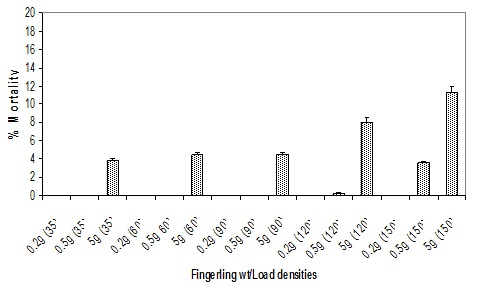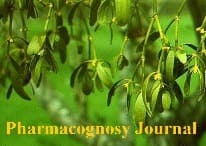International Journal of Fisheries and Aquatic Studies
Volume 1, Issue 5, 2014
Optimization of Seed and Broodstock Transport Densities for Improved Survival of Cultured Nile Tilapia
(Oreochromis niloticus, L. 1758)
Author(s): P.S. Orina, J.M. Munguti, M.A. Opiyo, H.C. Karisa
Abstract: Nile tilapia fingerlings (mean weight 0.2g, 0.5g and 5g) were packed at 35, 60, 90, 120 and 150 fish/bag for simulated 24h transportation. Similarly, brooders (mean weight 65 g) were packed at 8, 16 and 24 fish/bag. The bags, each with a capacity of 5 L, were filled with 2 L of water and filled with pressurized oxygen. DO, pH, temperature, total ammonia, non-ionized ammonia and mortality were monitored throughout the experiment. After simulation, mortality was monitored in hapas over 7 days. Combined effect of duration, load densities and weight on DO, ammonia levels and mortalities was significant (p < 0.05) with highest fingerling survival (100%) at 120/bag for 0.2g fingerlings and lowest (74.5 %) at 150/bag for 5g fingerlings. Transport duration and DO levels (p < 0.05) significantly affected the survival of brooders. Highest brooder survival (96%) was recorded at 8 fish/bag and lowest survival (67%) at 24 fish/bag. Size, number and duration of transport of Nile tilapia fingerlings and brooders need to be considered during transportation by ensuring transportation duration is within 12 hr to avoid low DO and increased ammonia levels.

Fig. 1: Accumulated mortality of the Nile tilapia (O. niloticus) fingerlings as a function of load density and size (g) at end of 24 hr transportation duration.
Download Full Article: Click Here
Journal is Indexed and Abstracted in following Database(s).
    |
    |
       |

